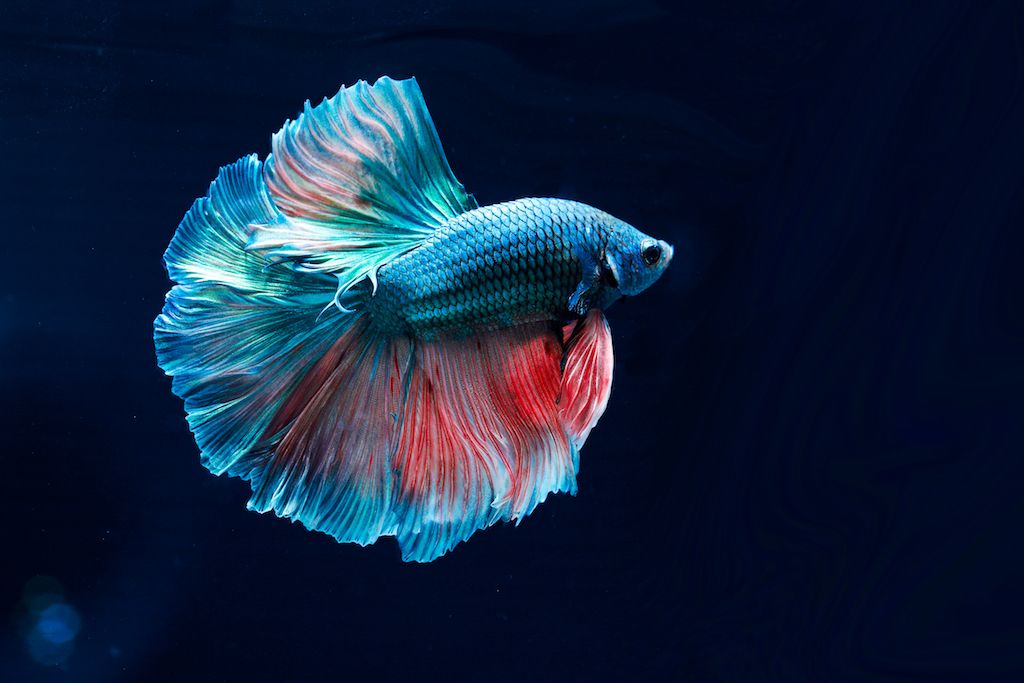Betta Fish Tank Arrangement: A Step-by-Step Guide for Beginners
Betta Fish Tank Arrangement: A Step-by-Step Guide for Beginners
Blog Article
All About Betta Fish: Understanding Their Special Demands, Actions, and the Ideal Practices for Ideal Care
Comprehending the unique demands and behaviors of Betta fish is crucial for any type of aquarist wanting to give ideal treatment. These fascinating animals, belonging to the cozy waters of Southeast Asia, display distinctive territorial tendencies and need details ecological problems to grow. From choosing the right container size to identifying potential wellness problems, different elements dramatically affect their wellness. As we check out these aspects better, the ramifications for both amateur and seasoned fish keepers come to be significantly evident, questioning about just how finest to fit these impressive fish in our homes.
Betta Fish Review
Although frequently admired for their vibrant colors and streaming fins, Betta fish, clinically referred to as Betta splendens, are complex animals that call for certain like flourish. Originating from Southeast Asia, these freshwater fish are recognized for their territorial nature and distinct actions. Betta fish exhibit sexual dimorphism, with men showing a lot more dazzling colors and longer fins than ladies.
Their aggressive tendencies, specifically amongst males, necessitate careful factor to consider when housing them. Bettas are often kept in single-specimen containers to avoid territorial conflicts. They can exist side-by-side peacefully with particular suitable varieties in larger neighborhood containers, offered the atmosphere meets their demands.

To ensure ideal care, aquarists have to understand their special behavior qualities, dietary needs, and habitat requirements. betta fish. With correct focus, Betta fish can show their dynamic individualities and thrive in a properly maintained aquarium setting
Natural Environment and Setting
Betta fish flourish in a varied range of natural habitats, largely located in the superficial waters of Southeast Asia, including rice paddies, swamps, and slow-moving streams. These atmospheres are identified by cozy temperatures, normally between 75 ° F and 82 ° F(24 ° C and 28 ° C ), and a pH level ranging from 6.5 to 7.5, which is ideal for their wellness and wellness.
In their all-natural environments, Betta fish are accustomed to dense plant life, giving both shelter and breeding grounds. The presence of plants such as drifting water lilies and thick yards not only provides protection from killers yet additionally contributes to the oxygenation of the water, which is necessary for their breathing demands. Furthermore, these settings usually have areas of still water, allowing Betta fish to show their natural habits such as bubble nesting.
Comprehending the all-natural environment of Betta fish is critical for aquarium lovers. Reproducing these conditions-- with water temperature, pH balance, and the inclusion of live plants-- can considerably boost the total wellness and durability of these exciting fish, ensuring they thrive in a home aquarium setting.
Social Behavior and Interactions
Comprehending the social actions and interactions of Betta fish is important for effective fish tank monitoring. Betta fish, or Siamese fighting fish, are understood for their distinct behavioral traits, identified mostly by territoriality and hostility.
On the other hand, female Bettas show less hostile behavior and can coexist in groups, referred to as sororities, if presented effectively. It is important to check their communications very closely, as pecking order and supremacy official site can lead to problems. Understanding the dynamics within a Betta area is essential; establishing hiding areas and ensuring adequate area can minimize aggressiveness.
In addition, Betta fish may likewise display inquisitiveness and social behaviors in the direction of other varieties. While they can exist side-by-side More Help with certain non-aggressive storage tank companions, it is necessary to select suitable types to avoid stress and aggressiveness. On the whole, recognizing these social communications is vital to fostering an unified aquarium setting for Betta fish.
Vital Treatment Guidelines
Giving appropriate look after Betta fish is vital to their health and wellness. To guarantee a successful environment, it is vital to keep ideal water conditions. The water temperature level must be maintained between 76 ° F and 82 ° F(24 ° C to 28 ° C), while pH levels must vary from 6.5 to 7.5. Regular water changes-- about 25% weekly-- assistance preserve water top quality.
Betta fish call for an ideal container size; a minimum of 5 gallons is advised to give adequate space for swimming and hiding. Include decorations and plants to produce a revitalizing atmosphere, however prevent sharp things that could damage their delicate fins.

Finally, ensure the container is furnished with a filter to keep the water clean, but make use of a mild filter to avoid strong currents that can stress the fish. By adhering to these vital care standards, proprietors can promote a healthy and dynamic Betta fish.
Common Health And Wellness Issues and Solutions
In the care of Betta fish, awareness of typical health and wellness concerns is vital for keeping their health. To treat fin rot, boost water conditions and consider webpage utilizing a broad-spectrum antibiotic.
An additional usual ailment is ich, a parasitic infection defined by white spots on the fish's body (betta fish). Therapy involves increasing water temperature level and adding fish tank salt to the storage tank, as this can aid get rid of the parasite
Swim bladder disorder is likewise regularly observed, bring about buoyancy problems. This problem may occur from overfeeding or irregularity. A fasting duration of 24-48 hours, followed by a diet regimen of blanched peas, can supply relief.
Finally, bettas might suffer from velvet illness, suggested by a gold dust-like appearance on their skin. Treatment normally calls for drug especially developed for external parasites, alongside improved container health.
Normal tracking of water parameters, maintaining a clean environment, and supplying a balanced diet are important preventive measures. By addressing these health issues promptly, Betta fish can lead healthier, much more vivid lives.
Final Thought
In recap, effective betta fish treatment requires an understanding of their special requirements and habits. Routine surveillance of health and wellness and water quality, along with a well balanced diet plan, contributes to the longevity and vibrancy of betta fish.
Report this page